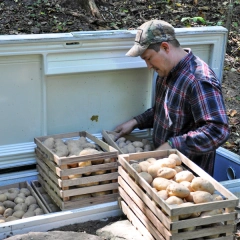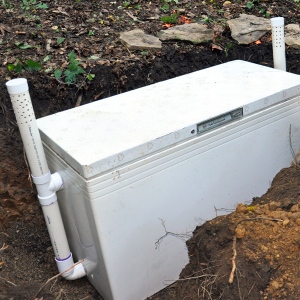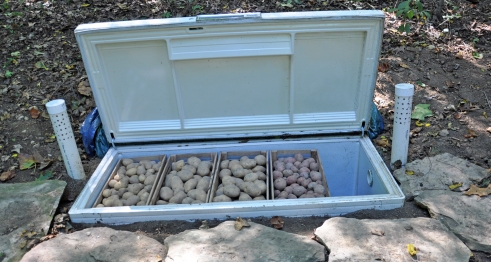I’ve been meaning to post this for a long time now. We’ve been using this system for over five years and it has met our needs well, providing plenty of potatoes from harvest to harvest. This is what any remaining potatoes look like after wintering in the freezer. As of mid-May in Ohio, they’re just starting to sprout, but most are still very firm and taste great. None are rotting or smelly. The Kennebecs seem to fare better than the Pontiacs (red) which can be a little bit softer.
We pull out a bunch to take to the house to eat over the summer and then use the rest for “seed potatoes.” I’m not sure what “best practice” would be in terms of selecting potatoes for seed (maybe reserving the biggest, nicest ones for this purpose?) It’s tempting to cook those ones up, and honestly we always seem to have plenty so I just never gave it much thought, but it could be worth considering, especially if you are limited on garden space.
Once it’s consistently warm outside, I do recommended dealing with potatoes in the freezer one way or another as they will begin to deteriorate in the summer heat.














